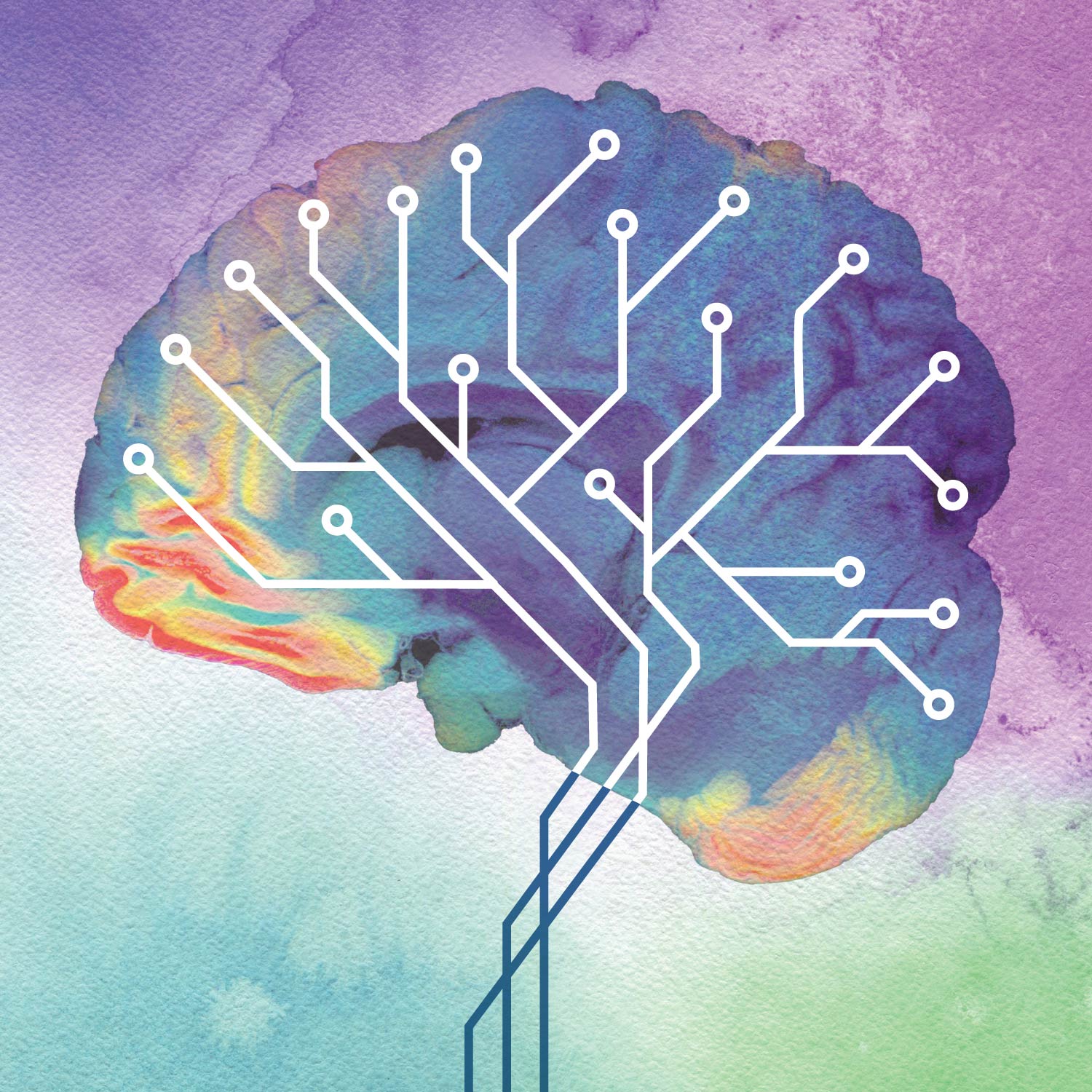Transcranial Focused Ultrasound Improves the Performance of a Noninvasive Brain-Computer Interface

In a new study from Carnegie Mellon University, volunteers’ ability to type letters with their minds using a noninvasive brain-computer interface increased in response to ultrasound stimulation of a brain area associated with visual motion processing. This research, which was partly funded by the National Center for Complementary and Integrative Health and is part of the National Institutes of Health Brain Research Through Advancing Innovative Neurotechnologies® (BRAIN) Initiative, was published in the journal Nature Communications.
Brain-computer interfaces can enable people with paralysis to control devices such as robotic arms and virtual keyboards with their minds. These interfaces read brain signals either through invasively implanted arrays or through noninvasive techniques, such as electroencephalography (EEG), that do not require brain surgery. Currently, the accuracy rates of noninvasive brain-computer interfaces are around 70 to 80 percent, so there is room for improvement. Pairing these interfaces with various types of noninvasive neuromodulation might help improve their performance. This study tested whether low-intensity transcranial focused ultrasound, a technique that can precisely target specific parts of the brain, can improve control of a brain-computer interface and investigated possible mechanisms of action.
Twenty-one healthy volunteers participated in experiments in which they used a noninvasive brain-computer interface system to try to type specific sequences of letters. The study participants wore an EEG cap that had been modified to provide focused ultrasound stimulation of the V5 area of the brain—the primary brain area associated with visual motion processing. The volunteers were given a virtual keyboard on a screen and asked to type letters by staring at the specific letter they wanted to type when lines flashed across the keyboard. Ultrasound stimulation was administered just before and during each line flash.
V5-targeted ultrasound significantly reduced typing errors when compared with three control conditions: one without ultrasound, one with the ultrasound turned on but disconnected (the device made its usual beeping noises, but no ultrasound stimulation was provided), and one with ultrasound stimulation directed to a different region of the brain. Analysis of EEG data indicated that ultrasound stimulation of V5 significantly increased theta activity both in the V5 area and downstream in the dorsal visual processing pathway. Thus, the mechanism of action of the V5-focused ultrasound may involve increasing the brain’s attention to visual motion.
The researchers who performed the study said that transcranial focused ultrasound has advantages over other techniques that have been tested for their ability to improve brain-computer interface performance, such as transcranial electric and magnetic stimulation, because it can be targeted more precisely and can be used during stimulation sessions, rather than before or between sessions. By improving the accuracy of noninvasive brain-computer interfaces, transcranial focused ultrasound may help people with paralysis communicate successfully without the need for a brain implant.
Reference
- Kosnoff J, Yu K, Liu C, et al. Transcranial focused ultrasound to V5 enhances human visual motion brain-computer interface by modulating feature-based attention. Nature Communications. 2024;15(1):4382.
Publication Date: June 11, 2024